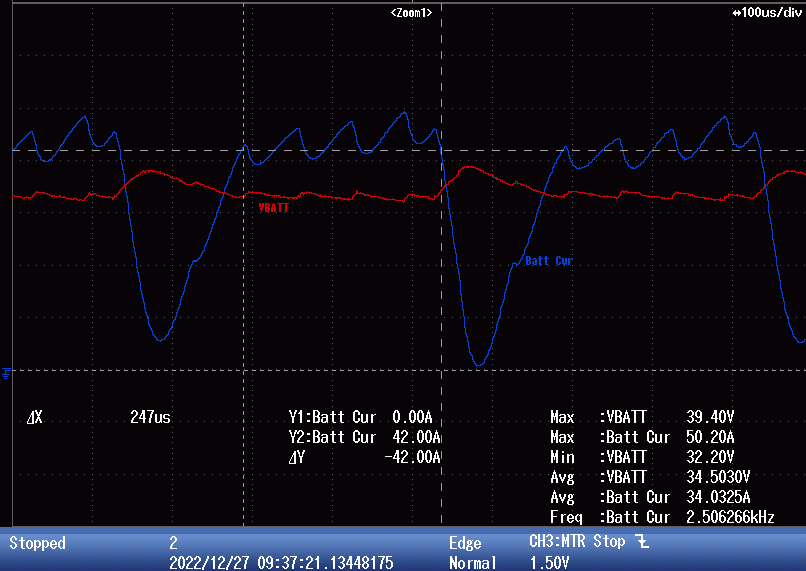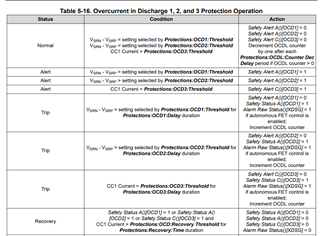To whom it may concern:
We are using BQ76942 for the power tool battery protection, which has very high pulse current around 50A, and 2.5KHz frequency. The average current is about 34A. The waveform is attached.

The protection threshold OCD1 is set to 40A/60ms, and OCD2 = 50A/10ms. The protection get triggered occasionally, and the performance varies from pack to pack.
So I just want to understand how the IC sensing the current, such as sampling rate; and also how to set the OCD1 and OCD2 properly to avoid the protection triggered. The cell has max continuous discharge current at 45A.
Thank you!
Chen





